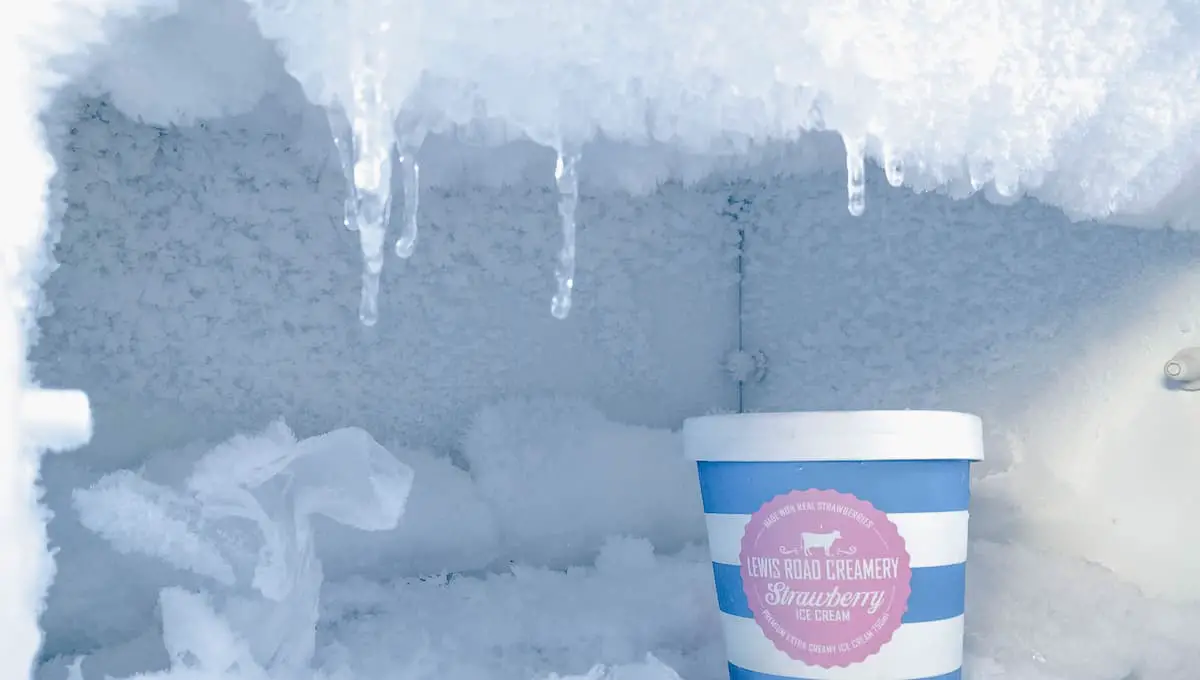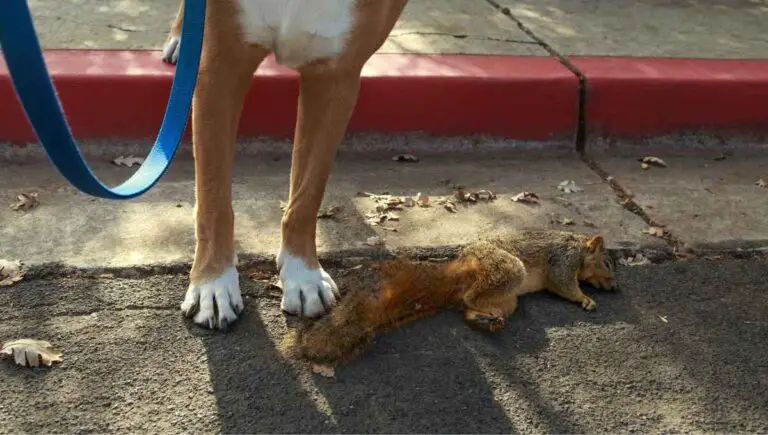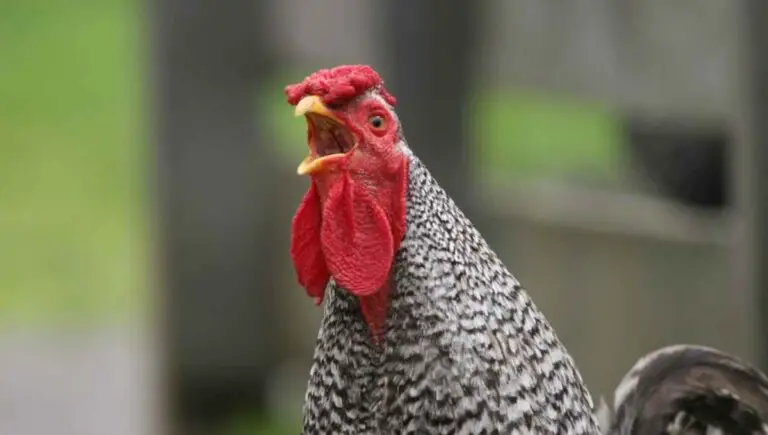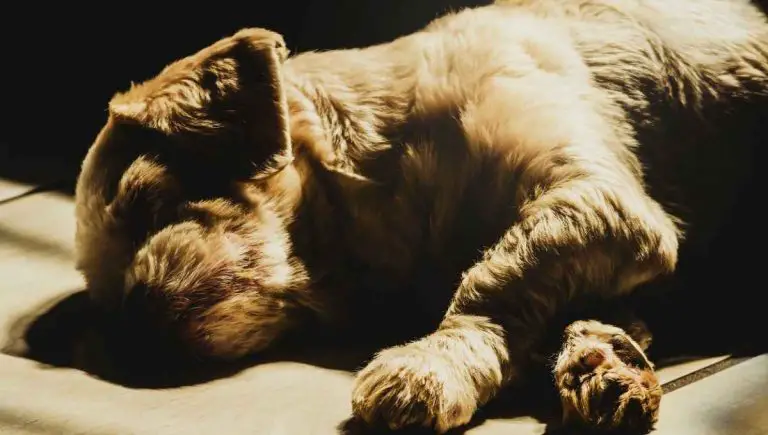How Long Can You Keep a Dead Pet In the Freezer?

Having a pet die on you during winter can be a real challenge. Not only is the loss of a pet heartbreaking, but it might be stressful enough to think about ways on how to bury them. In winter, the ground is frozen solid, so it could be difficult to dig a grave for your deceased animal companion. For this reason, pet owners hold off on the burial during winter by putting their dead pet in a freezer first. But how long can you keep a dead pet in the freezer?
Can you freeze a dead animal, and is it safe to put a dead pet in the freezer?
You can keep a dead pet in the freezer for as long as needed. Freezing a pet will keep the animal preserved and prevent it’s decay, however this is a destructive process. When a pet is frozen, the animal’s cells rupture and crystallize, making necropsy difficult and inaccurate.
Still, there are other things you need to consider, which we will discuss more in-depth with this article.
You might think that freezing pets after death is a weird practice – horrifying, even. However, you’ll be surprised that pet owners commonly do that. The main reason for this is that cremation or burial is not feasible at the moment for certain reasons, like weather or season.
This post contains affiliate links. This means Yard Blogger may earn a commission should you make a purchase using any of our links. Please refer to our full affiliate disclosure policy for full details.
Here’s a Quick Pro Tip!
While putting your beloved pet’s body in the freezer will help preserve it, most people aren’t fond of the idea of having a dead animal in the same place they put their food.
Small Chest Freezers like these on Amazon work really well to preserve your pet, while also making sure things stay sanitary.
Chest Freezers take up very little space but are large enough to fit pets of most sizes.
You might also want to check out:
How Long Can a Dead Animal Last In The Freezer?
Ideally, you need to freeze your pet as soon as possible after its death. Animals decompose soon after death, and it may give off a foul stench and attract pests. If you live in an area with a warm climate, the decomposition rate is much faster, so freezing immediately becomes all the more essential.
Freezing your pet will help it last for days and even weeks until cremation services are available or if it’s spring, when the ground is soft enough for digging (e.g. when the death occurred in winter.)
However, it is not recommended to keep your pet in the freezer forever. Freezing can only slow down the decomposition rate, but it’s still decomposing nevertheless. That said, you may still notice odors, albeit only mild.
Generally, dead pets should not be kept at home for a long time, whether they are well sealed or not, as this could pose a health risk. Some owners will find it hard to let go, but there are other options to preserve a dead pet, including taxidermy and freeze-drying, which will be discussed more further below.
How Do You Freeze a Dead Pet
Freezing a dead pet is a common practice among pet owners. It’s a step they need to take before they are able to bury the animal, especially during winter, as burial preparations can take time. Others have used their main refrigerator for this process, but it’s much better to have a spare freezer for this sole purpose.

Invest in a unit with high freezing performance, like COSTWAY Chest Freezer, which can also fit in the back of your car. Another product to consider is Whynter, which is small enough for limited spaces.
If you don’t have a spare freezer and may need to use your main unit, make sure you take out all the food to avoid contamination.
Tips for Preparing Your Pets Remains
If there is a need to put your deceased pet in the freezer, here are some tips to remember:
- Always wear protective gloves when handling your pet’s dead body. Keep in mind that bodily fluids leak out upon death. Extra fluids also get released when you move the body. If fluids and excreta have been released, clean up your pet.
- Get a blanket to wrap around your pet. For large breeds, you need to invest in large-sized towels like this Jumbo Size Thick towel to ensure the body is well covered.
- Arrange the body properly on the blanket, placing your pet on a curled-up position on its side. This should give pet owners a sense of peace; it also makes it easier to handle the deceased pet.
- Obtain a plastic bag and place the wrapped-up body in it. A plastic bag that goes well with a thick towel is one from Vacwel, a large vacuum storage bag. This ensures your pet’s body is sealed well before you put it in the freezer. Another option to look at is the Spacesaver Premium Vacuum storage bag.
- If in case you can’t prepare the remains this way, you can always call the vet (discussed more below). If that won’t work out still, keeping the remains in the basement would suffice. However, do take note that storing your pet in the basement shouldn’t take longer than 4-6 hours as odors may start to permeate your home.
- The last resort would be to find the coldest spot in your home away from sunlight. Temporarily keep your pet in this spot, making sure the remains are placed in a plastic bag. Use bags of ice to keep the area cool.
Calling Your Vet
If you don’t have a freezer at home, your vet can help you temporarily keep your pet in their facility’s cold storage until you have settled the final arrangements. Almost all vet facilities have a freezer, and they will be willing to help you with that, especially if you are a long-time client.
There are also those that still offer after-life services, regardless of whether or not the vet cared for your pet when it was still alive. If you are lucky enough to go for this option, you should have enough time to prepare for cremation or a burial ceremony.
When Not To Freeze A Pet

Freezing your pet shouldn’t be done if you plan to have a necropsy, or investigate the cause of death of your pet. In this procedure, your pet will undergo an autopsy to have the tissues examined. If the cause of death was unclear, your vet may take samples of the tissues and have it evaluated in a lab by a veterinary pathologist.
If you are sure about having a funeral for your pet, request that only minimal incisions be done.
If you want necropsy performed, contact your vet as soon as possible. If there is a need to delay, refrigerate your pet first – but don’t freeze him or her. The ice crystals will damage the tissues, making it impossible to find out what happened to your pet.
How Do You Preserve a Dead Pet
It’s best to keep in mind that storing your pet in a freezer is only necessary if you intend to have a burial or cremation later on. You shouldn’t be putting your pet in a freezer if you want to keep its memory or if you can’t find it in your heart to let go.
Instead, go for other methods of preservation. The most common ways you can preserve a pet are freeze-drying and taxidermy. What is the difference between the two?
Freeze Drying Pets
By definition, freeze-drying is a preservation method that uses vacuum pressure and extremely cold temperatures to remove all moisture from the animal’s tissues, interrupting the decomposition process as a result.
The process starts off with the removal of internal organs and fat as they don’t dry well. If the pet looks skinny (maybe from an illness before death), there is a need for artificial fillers to stuff them up and make them look plump.
The next step is freeze-drying, which involves placing the dead animal in a sealed vacuum chamber and exposing it to very low temperatures. The frozen moisture will then be converted to gas and extracted. The removal of this moisture will then stop the decaying process.
The time to complete the preservation process will depend on the size of your pet. If you have a small cat or dog, or other small animals like birds, the process can take 3-4 months to complete. On the other hand, if you have a large dog, it would take a year or more for the process to finish.
How Long Will a Freeze Dried Pet Last?
Proper care and maintenance should help your freeze-dried pest last for a lifetime. Make sure to clean them often and keep dust from accumulating. Stains are also an enemy of a preserved animal so make sure to avoid them as well.
You shouldn’t have to worry that your freeze-dried pet will get damaged if you carry or pet them, as long as you take steps to care for it. Below are quick tips to help your freeze-dried pet last longer:
- Give a light dusting
- Protect it with a surface spray, like Sevin Dust, every three months to avoid pests like silverfish.
- Avoid putting your preserved pet in direct sunlight as this would result in bleached fur.
- Don’t keep the preserved pet in areas of your home where there is high humidity, such as the kitchen, bathroom, and laundry room.
What To Do If You Want To Freeze-Dry Your Pet
It’s not easy to decide that you want to freeze-dry your pet immediately after it dies unless you’ve prepared for this beforehand. If your pet dies prematurely, you may need a bit of time to decide what to do with them. If you haven’t decided, keep the following tips in mind:
- Ensure that your pet’s body is dry.
- Place your pet inside a plastic bag.
- Remove as much air as possible from the plastic
- Place your pet inside the freezer
Meanwhile, if you have made up your mind that you want to freeze-dry your pet, it’s time to ship or deliver your pet to a freeze-drying facility while they’re still frozen.
Taxidermy
Taxidermy is once a popular way of preserving animals. The process could involve skinning the animal; the skin is treated with chemicals and then mounted onto a frame resembling the animal’s body. Usually, this method will make your pet look stuffed, rather than life-like, as in freeze-drying.
Some people oppose the idea of taxidermy, especially since it involves skinning the animal. However, for pet owners who want to commemorate their furry best friend, choosing this method is one affordable way to keep the memory alive.
Similar to freeze-drying, taxidermied animals will last a long time if given proper care and maintenance. If you subject a taxidermied animal to unfavorable conditions, the rate of deterioration increases. Putting the animal in a glass case will help preserve your pet’s quality.
Freeze Drying vs Taxidermy for Pets
Between the two methods, freeze-drying produces a more natural-looking result. Your pet won’t have glassy eyes, a dead stare, and a stiff pose. On the other hand, taxidermy makes your pet look stuffed and stitches will be visible here and there.
Freeze-drying is also a less-invasive procedure. When a pet owner thinks about how their beloved friend was treated during the freeze-drying, it puts their mind at ease, knowing that the animal didn’t have to go through cutting, skinning, and stitches.
Another difference to consider is the price. Freeze-drying can be really expensive compared to taxidermy. Not to mention, the former takes a while to complete.
Overall, freeze-drying and conventional taxidermy have their own pros and cons. The best method for preserving dead pets will depend on personal preferences.
Conclusion
Experiencing grief over the loss of a pet is completely normal. One way to deal with the grief is by memorializing your animal companion in a way that involves other people who have loved him or her.
Preserving a dead pet may be considered strange for some but it is definitely one way of dealing with the loss, and it’s not something to be ashamed of. Reach out to friends and family for support during this heartbreaking time.
Some people might experience extreme grief in the wake of the death of a beloved pet. If you are one of them, don’t hesitate to consult a doctor regarding your emotions and finding ways to cope with grief.







